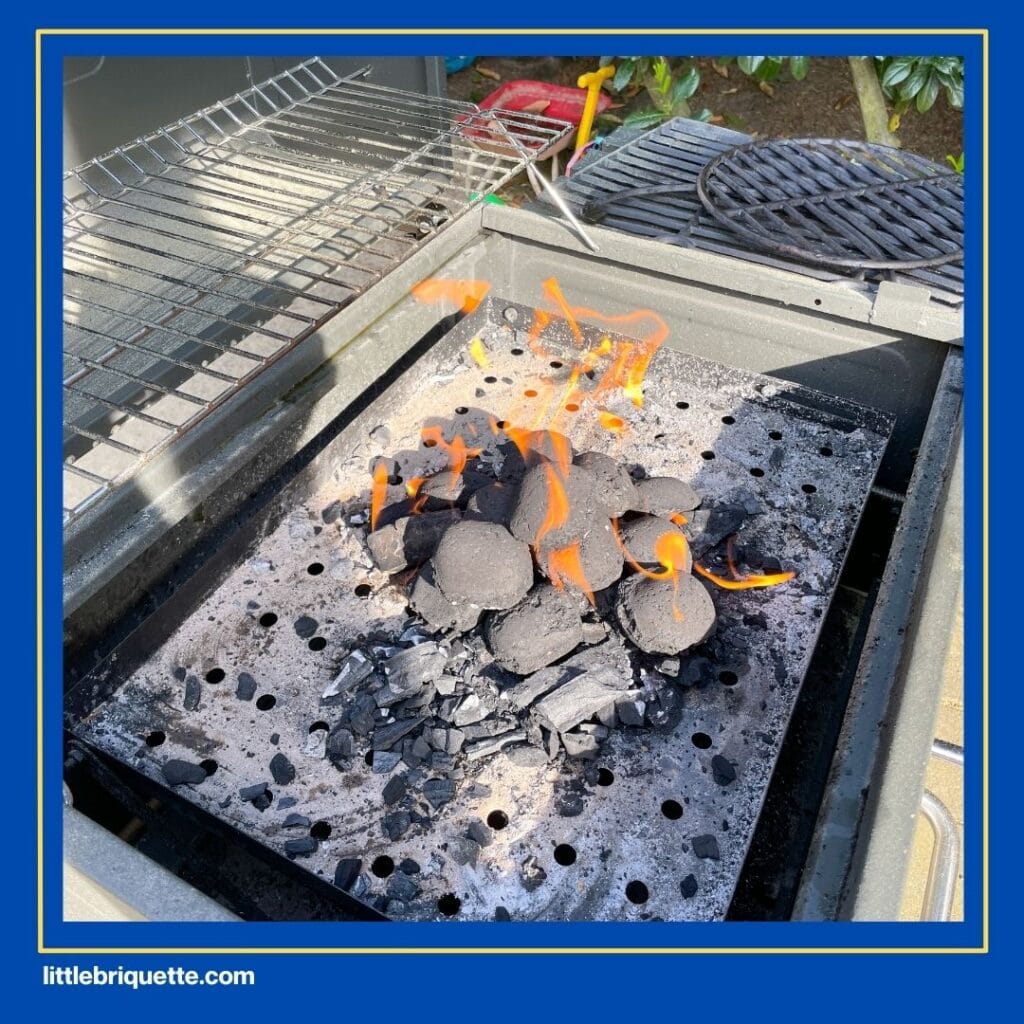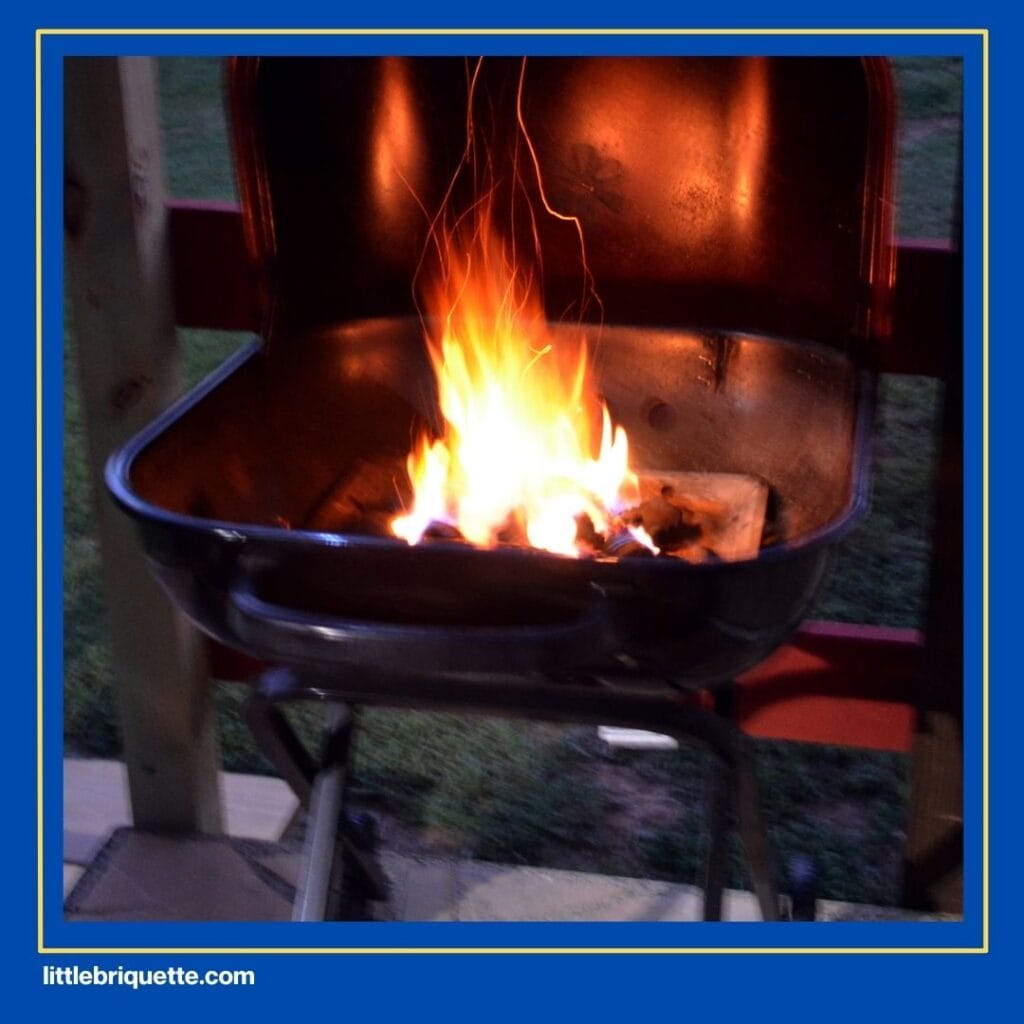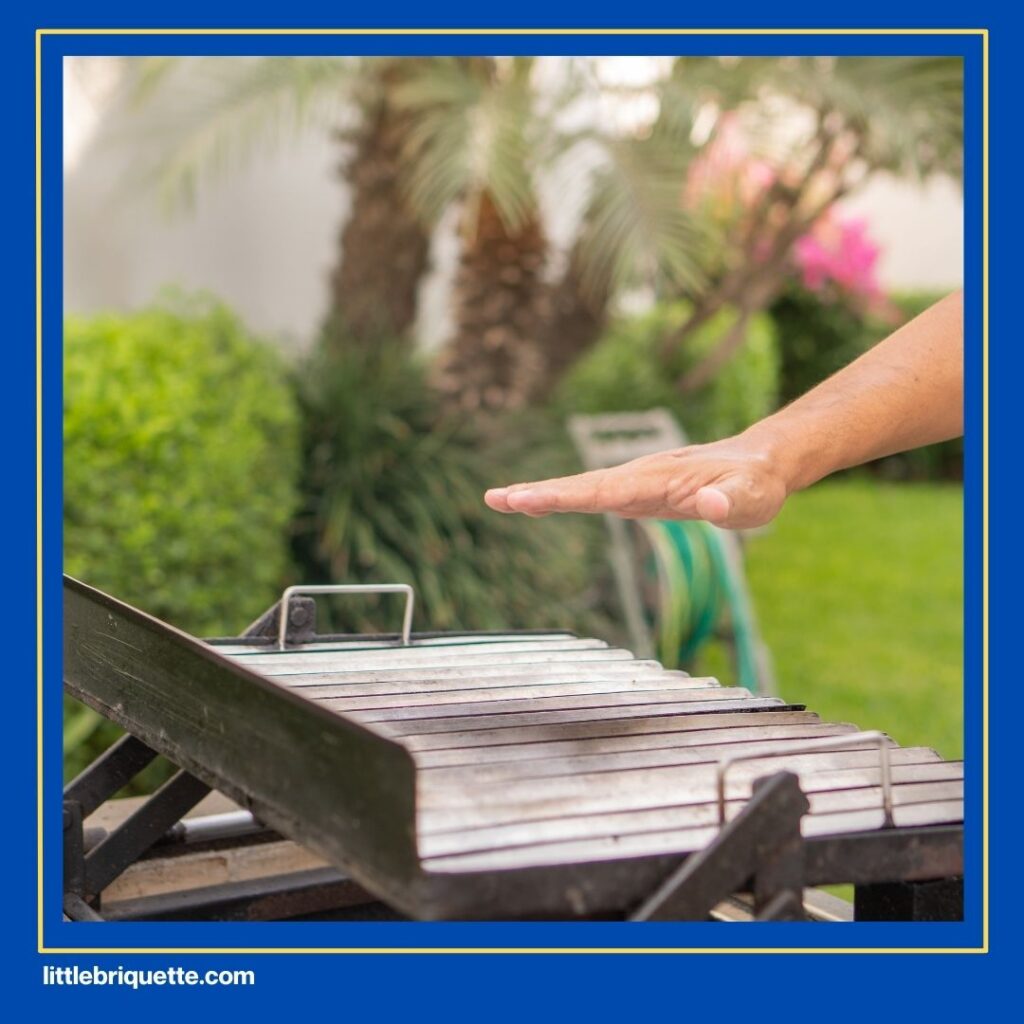Are you a BBQ enthusiast looking to enhance your grilling experience with a gas grill? Using briquettes for gas grill could be a great choice. While gas grills are known for their convenience and speed, adding briquettes can deliver more satisfying results. Briquettes not only produce a more stable and even heat, but they also provide a smoky flavor that’s hard to achieve with regular gas, giving you a more authentic and delicious grilled taste.
Additionally, briquettes have a longer heat-up time, allowing you to cook food using indirect heat or slow cooking techniques more effectively. In this article, we’ll cover how to make the most of briquettes for your gas grill, ensuring that each BBQ session turns out perfectly.
Why Briquettes for Gas Grills Are a Great Choice
Briquettes are a type of fuel made from charcoal or other organic materials that are compressed into a solid, compact form. The briquette production process combines ingredients such as coconut shells with binding agents to create uniform charcoal pieces that are easier to use.
Briquettes are designed to burn longer and more evenly compared to regular charcoal, providing a significant advantage for grilling that requires stable temperature control. While gas grills offer convenience and speed in cooking, briquettes have the upper hand in producing a richer, more intense smoky flavor and providing more consistent heat, making them ideal for grillers seeking a more authentic BBQ experience.
Using briquettes for gas grill offers several benefits that gas alone can’t provide. One of the main advantages is the more stable temperature, which is crucial for cooking food evenly, especially when grilling large cuts of meat or cooking with indirect heat techniques.
Additionally, briquettes deliver a deeper, more robust smoky flavor, which is often difficult to achieve with just regular gas flames. This makes briquettes the perfect choice for grillers who want to enhance the taste of their food, particularly for dishes that require longer cooking times, such as roast meats or whole chickens. By using briquettes, you get the perfect combination of the convenience of a gas grill with the quality of traditional grilling.
Read Also: How to Reuse Charcoal Briquettes as Plant Fertilizer?
Tips and Tricks for Using Briquettes for Gas Grills
To achieve perfect cooking results, it’s important to understand the best practices for using briquettes for gas grill. Follow these steps for optimal grilling performance.
Correct Placement Method

For the best grilling results with briquettes, it’s essential to arrange them properly. One of the most effective techniques is the two-zone method, which divides the grill into two sides: a direct heat side and an indirect heat side. Place the briquettes on one side of the grill to create direct heat, which is ideal for quickly grilling foods like steaks or vegetables.
On the other side, either leave the grill empty or place a small amount of briquettes to create a low indirect heat zone. This technique allows you to cook different types of food simultaneously, giving you the flexibility to grill with high heat on one side, while the other side is perfect for slower cooking or finishing larger items.
To keep the briquettes in place and help ensure even heat distribution, you can use a heat shield or a specialized rack designed to hold the briquettes in a specific position. Some modern grills come with built-in racks or trays for briquettes, but if yours doesn’t, you can easily purchase additional accessories to help arrange them effectively.
Also, make sure that the grill’s ventilation is fully open to support good airflow. Proper air circulation will help distribute the heat more evenly throughout the grill, ensuring that every part of your food gets the right temperature and preventing hot or cold spots.
By managing airflow and carefully arranging your briquettes, you can achieve a more controlled, consistent cooking experience, leading to a better overall BBQ.
How to Light Briquettes for Gas Grills

Lighting briquettes for your gas grill can be done using various effective methods, without the need for lighter fluid. One of the most common methods is to use a charcoal chimney starter, a cylindrical tool designed to evenly distribute heat and help ignite the briquettes. Simply place the briquettes into the chimney starter, light the bottom using a match or a lighter, and let the fire spread until the briquettes are well-lit. This method ensures cleaner and more stable combustion, while reducing the risk of excessive smoke that can occur with lighter fluid.
If you don’t have a chimney starter, you can also use the mound method to light your briquettes. Create a small mound of briquettes, then ignite them with direct flame from the gas grill or a match. Once the briquettes start to light, let them burn for a few minutes before transferring them to the desired location on the grill.
Make sure to check that the briquettes are fully lit and producing enough heat before you start grilling. To finish heating the briquettes, you can gradually turn on the gas grill to help maintain the desired temperature, but be careful not to leave it on too long, as the goal is to maintain the natural burning of the briquettes.
Controlling Temperature Effectively

Managing the temperature while grilling with briquettes on a gas grill requires an understanding of heat distribution within the grill. Briquettes offer an advantage in terms of temperature stability, but you’ll need to monitor them carefully to avoid sharp fluctuations.
To maintain a steady temperature, ensure that the briquettes are fully ignited before you begin grilling, and always check the heat distribution across the entire grill. You can control the temperature by adjusting the amount of briquettes used. More briquettes will produce higher heat, while fewer briquettes will offer lower, more controlled temperatures. This technique is particularly useful when grilling with indirect heat.
In addition to adjusting the number of briquettes, the ventilation settings and gas control on your grill also play a key role in managing temperature. Most gas grills have adjustable vents on both the top and bottom to regulate airflow. Opening the vents will allow more oxygen to enter, which can increase heat, while partially closing the vents can lower the temperature and slow down the burning of the briquettes.
Don’t forget to check the gas settings on your grill as well. Sometimes, adjusting the gas flow can help maintain a steady temperature when cooking with briquettes. By combining the right briquette arrangement, ventilation, and gas control, you can maintain consistent heat for the perfect BBQ results.
Read Also: Benefits of Using Bagged Briquettes for Home Heating
Coconut Charcoal Briquette Production Centers
Using coconut charcoal briquettes, known for their stable burn temperature, minimal smoke, and eco-friendly properties, will give your cooking an enhanced flavor profile. Low-quality coconut charcoal briquettes can negatively affect your food’s taste and even your health. That’s why it’s important to choose high-quality coconut charcoal briquettes from reputable sources.
One of the best sources of premium coconut charcoal briquettes is Little Briquette, a certified producer based in Indonesia. Little Briquette offers bulk coconut charcoal briquettes, which can be shipped worldwide at affordable shipping rates. To place an order, you can directly contact the admin via the provided contact number.

